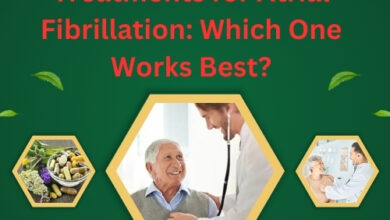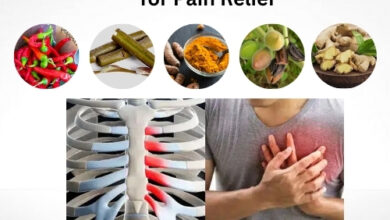COPD Breathlessness Treatment and The Truth Behind Chest Pain

Are you or someone you love struggling with COPD and experiencing persistent chest pain? You’re not alone. COPD, or Chronic Obstructive Pulmonary Disease, affects millions of people worldwide and is a leading cause of death. Along with symptoms such as shortness of breath and wheezing, many individuals with COPD also experience chest pain, which can be alarming and debilitating. But what causes this chest pain, and is there an effective treatment? The truth behind chest pain and COPD breathlessness treatment, including the role of a persistent cough that usually brings up phlegm and the potential benefits of natural treatment for bronchiectasis. So if you’re tired of living with chest pain and looking for answers, keep reading for an engaging and informative discussion on this important topic.
The Nature of COPD and its Symptoms
Chronic Obstructive Pulmonary Disease, better known as COPD, is a progressive lung disease that makes it difficult for individuals to breathe. While each person’s experience with COPD can vary, common symptoms often include a persistent cough with mucus production, shortness of breath, Wheezing, and fatigue. COPD can also have systemic effects, including Joint Pain and muscle weakness.
A significant challenge with COPD is that symptoms often worsen over time and can dramatically impact a person’s quality of life. On the bright side, an understanding of these symptoms can help individuals with COPD seek out treatments that can alleviate these symptoms. An increasingly popular avenue of treatment is the use of natural remedies for bronchiectasis. These remedies are a Natural Treatment for Bronchiectasis, a condition often associated with COPD, and can aid in managing symptoms and improving lung function. Despite the challenging nature of COPD, it’s essential to remember that knowledge and treatment can greatly enhance an individual’s lifestyle and comfort.
The Link Between COPD, Chest Pain and Breathlessness
When COPD progresses, two of the most common symptoms experienced by patients are chest pain and breathlessness. This pain is often a result of the lungs and other respiratory muscles working harder than usual to compensate for damaged lung tissues. Simultaneously, breathlessness is primarily due to the obstruction and damage of airways, making it more challenging to draw a full breath. This combination can be unnerving, causing stress and anxiety which may exacerbate the symptoms further.
The good news is that with proper copd breathlessness treatment, these symptoms can be effectively managed. For instance, a herbal supplement like Creseton has been gaining popularity for its potential to naturally support lung health and help alleviate breathlessness. Additionally, the use of Natural Remedies for Bronchiectasis has shown to improve lung function and reduce mucus production. The link between COPD, Chest Pain, and breathlessness might be strong, but it’s important to remember that treatment and relief are within reach.
Decoding the Breathlessness in COPD
Breathlessness, or dyspnea, is a common yet distressing symptom in COPD patients. This sensation of being unable to catch your breath is often the result of airways narrowing due to inflammation and damage. In severe cases, it can also lead to frightening episodes of coughing up blood or blood-stained phlegm. Breathlessness can be triggered by even minimal physical activity and it’s often accompanied by A Persistent Cough That Usually Brings Up Phlegm.
These symptoms can significantly disrupt daily activities, making routine tasks like climbing stairs or even dressing, challenging. A viable solution to manage this condition can be a natural treatment for bronchiectasis. Natural treatments, such as certain herbs and dietary changes, can aid in clearing mucus from the lungs, reducing inflammation, and improving overall lung function. These approaches complement conventional copd breathlessness treatment and can offer relief to those living with COPD. It’s crucial to consult with a healthcare professional to understand the best course of action for managing breathlessness in COPD.
Chest Pain in COPD Patients: Causes and Characteristics
Chest pain in COPD patients is often a source of discomfort and concern. It typically originates from the increased effort of breathing due to obstructed airways and inflamed lung tissues. Sometimes, the chest pain may intensify during coughing spells, potentially leading to instances of Coughing Up Blood or Blood-stained Phlegm. This can indeed be distressing but should prompt immediate medical attention. Another source of pain in COPD patients can be related to systemic effects like joint pain, adding another layer of complexity to this chronic condition. Natural remedies like Creseton are being explored for their potential to alleviate these symptoms, but it’s important to remember that they should be used alongside conventional copd breathlessness treatments. Understanding the causes and characteristics of Chest Pain can help those living with COPD manage their condition better and lead a more comfortable life.
Conventional Treatments for COPD
Conventional treatments for COPD typically focus on managing symptoms, slowing the progression of the disease, and improving overall quality of life. This often involves the use of bronchodilators, which help relax the muscles around the airways, making it easier to breathe. Inhaled steroids may also be prescribed to reduce inflammation within the airways. In more severe cases, oxygen therapy or surgical intervention may be necessary. These treatments can be effective in reducing distressing symptoms like Coughing Up Blood or Blood-stained Phlegm, a common occurrence in severe COPD.
Joint pain, a less discussed but common systemic effect of COPD, can be managed with regular gentle exercise and pain relief medication. Some individuals may also experience Rheumatoid Arthritis Due to Smoking, a known risk factor for COPD, further complicating their condition. It’s crucial to remember that while these conventional treatments can offer relief, they should be used alongside natural treatments for bronchiectasis and COPD breathlessness treatment. Integrative approaches often yield the best results, bringing significant relief to those grappling with this challenging condition.
Emerging Treatments for COPD
While conventional treatments and natural remedies have shown effectiveness in managing COPD symptoms, advancements in medical science are continuously striving to find more efficient ways to treat COPD. One of the promising developments is stem cell therapy, which aims to repair the damaged lung tissues and potentially reverse the effects of the disease. Another breakthrough is the development of a triple therapy inhaler, combining corticosteroids, long-acting muscarinic antagonists, and long-acting beta agonists. This inhaler could potentially improve lung function and decrease hospitalizations. Additionally, monoclonal antibodies are being studied for their ability to reduce inflammation in airways. Finally, research into gene therapy is investigating whether replacing or repairing faulty genes could help treat or even cure COPD. With these emerging treatments, the future of COPD management appears hopeful. It’s important to continue consulting with healthcare professionals to stay updated on the most recent developments in COPD treatment.
Living with COPD: Lifestyle Adjustments
Living with COPD can indeed be challenging, but adopting certain lifestyle changes can make a substantial difference. It’s essential to quit smoking, as it’s a key contributor to COPD and can also lead to complications like rheumatoid arthritis. Eating a balanced diet rich in fruits, vegetables, and lean proteins can aid in overall health and well-being. Regular, gentle exercise can help increase lung capacity, reduce joint pain, and improve overall mobility. It’s also beneficial to learn effective coughing techniques to manage episodes of coughing up blood or blood-stained phlegm.
Stress management is critical as well; yoga, mindfulness, and meditation can help lower stress levels, reducing the severity of breathlessness. Along with these adjustments, incorporating natural treatments for bronchiectasis can be beneficial. Many COPD patients have found relief with herbal supplements like Creseton, which aids in alleviating COPD symptoms. Remember, these lifestyle adjustments should complement your COPD breathlessness treatment. As always, it’s essential to discuss these changes with your healthcare professional to ensure they fit well into your treatment plan. Living with COPD is a journey, and these lifestyle adjustments can make the journey smoother.




